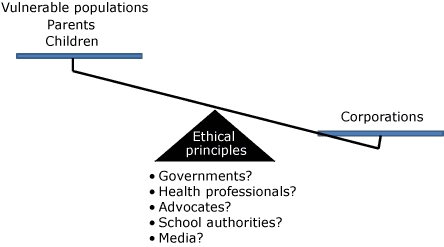Figure.

Ethical principles support the responsibility and ability of other societal entities to protect the rights of children, parents, and vulnerable populations more generally to a health-promoting (eg, non–obesity-promoting) environment in a context when these rights conflict with rights assigned to corporations that have more power and resources to defend their rights. To achieve balance requires alignment of diverse public and private attitudes regarding the most effective roles for governments and school authorities as well as eliminating stigmatization of people who are obese.
